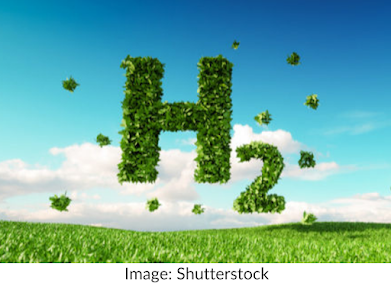Renewable Energy in Hawaii
 |
Hawaii was the first state to introduce a goal to run on 70% clean energy by 2030 and 100% clean energy by 2045 through the Hawaii Clean Energy Initiative (HCEI). It aims to reach this pioneering goal by defining, innovating, educating the workforce on, and creating economic opportunities around clean energy solutions. Due to its isolated geographical location, the state has relied on imported (and expensive) petroleum for its energy needs, but this is changing, as in 2019, a record of nearly 30% of energy in the state was generated from renewable sources; nationally, only 11% that year of energy came from renewable sources. In Maui for example, 9,300 solar systems with a 74 MW (mega watt) capacity, were installed on homes by the end of 2015, with PV solar energy production in the state doubling since 2014, making Hawaii the state with the sixth highest small scale solar power generation, despite its relatively small population of 1.4 million. The state is currently on track to meet its ambitious 2030 goal. Federal and state credits for renewable energy have greatly contributed to this, with PV solar systems qualifying for a 30% federal credit and a 35% Hawaiian state credit. Other state programs have also incentivized this, such as the Feed in Tariff (FIT) program that allows Hawaii residents to be paid by the state for feeding the excess renewable energy produced by their panels, into the main grid, and the Hawaii Green Business Program (HGBP), which assists and recognizes businesses that are pushing to be more environmentally responsible.
 |
Sources:
https://energy.hawaii.gov/wp-content/uploads/2019/07/2019-FF_Final.pdf
https://www.mauicounty.gov/1775/Energy-Programs
https://hawaiienergy.com/images/about/information-and-reports/ProgramYear2019_AnnualReport.pdf
https://energy.hawaii.gov/testbeds-initiatives/hcei
https://www.eia.gov/state/print.php?sid=HI
https://www.hawaiianelectric.com/clean-energy-hawaii/our-clean-energy-portfolio/renewable-energy-sources/solar#:~:text=Hawaii%20is%20a%20National%20Leader%20in%20Solar%20Power&text=Hawaii%20Island%20residents%20had%20installed,with%20a%2074%20MW%20capacity.&text=The%20capacity%20of%20installed%20utility,and%201.2%20megawatts%20on%20Lanai.
https://energy.hawaii.gov/wp-content/uploads/2019/07/2019-FF_Final.pdf
https://www.mauicounty.gov/1775/Energy-Programs
https://hawaiienergy.com/images/about/information-and-reports/ProgramYear2019_AnnualReport.pdf
https://energy.hawaii.gov/testbeds-initiatives/hcei
https://www.eia.gov/state/print.php?sid=HI
https://www.hawaiianelectric.com/clean-energy-hawaii/our-clean-energy-portfolio/renewable-energy-sources/solar#:~:text=Hawaii%20is%20a%20National%20Leader%20in%20Solar%20Power&text=Hawaii%20Island%20residents%20had%20installed,with%20a%2074%20MW%20capacity.&text=The%20capacity%20of%20installed%20utility,and%201.2%20megawatts%20on%20Lanai.




Comments
Post a Comment